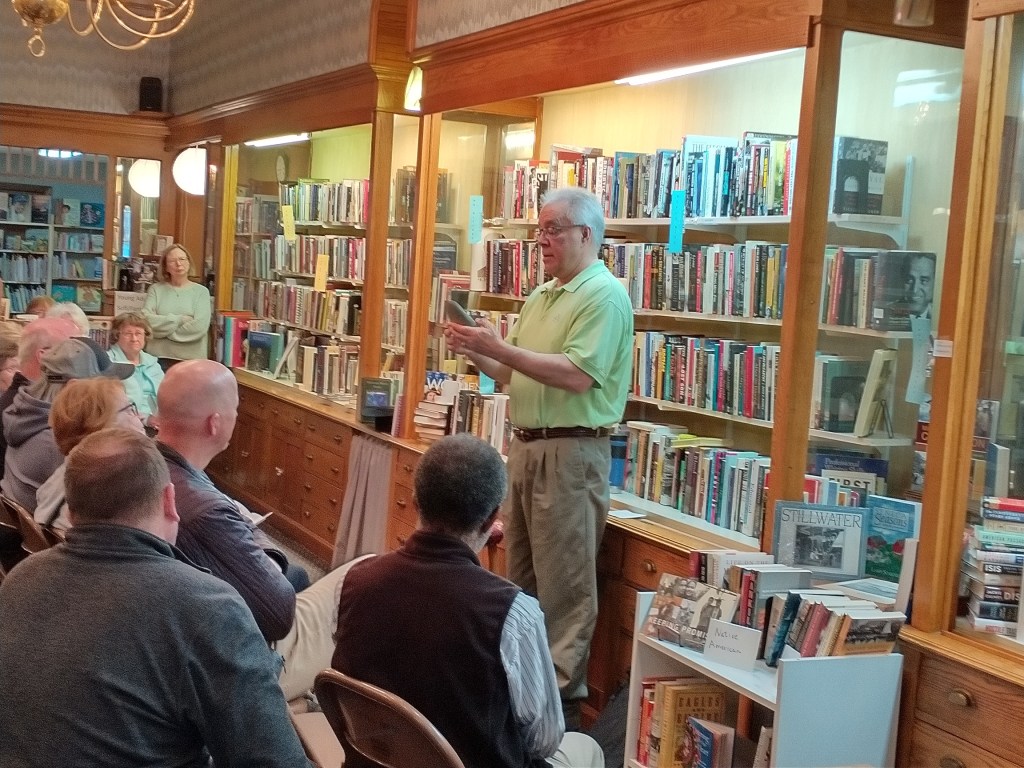
“WE’RE ALL CONNECTED. We’re all one.” Those closing words by local historian and artist Jeff Jarvis as he ended an hour-long presentation on “The Faribault Dakota” at Books on Central Thursday evening resonate. I’ve long been geographically-connected to Indigenous Peoples, first in my native Redwood County and now in Rice County. But Jarvis’ definition of connection stretches well beyond geography to the connection we all share simply via our humanity.
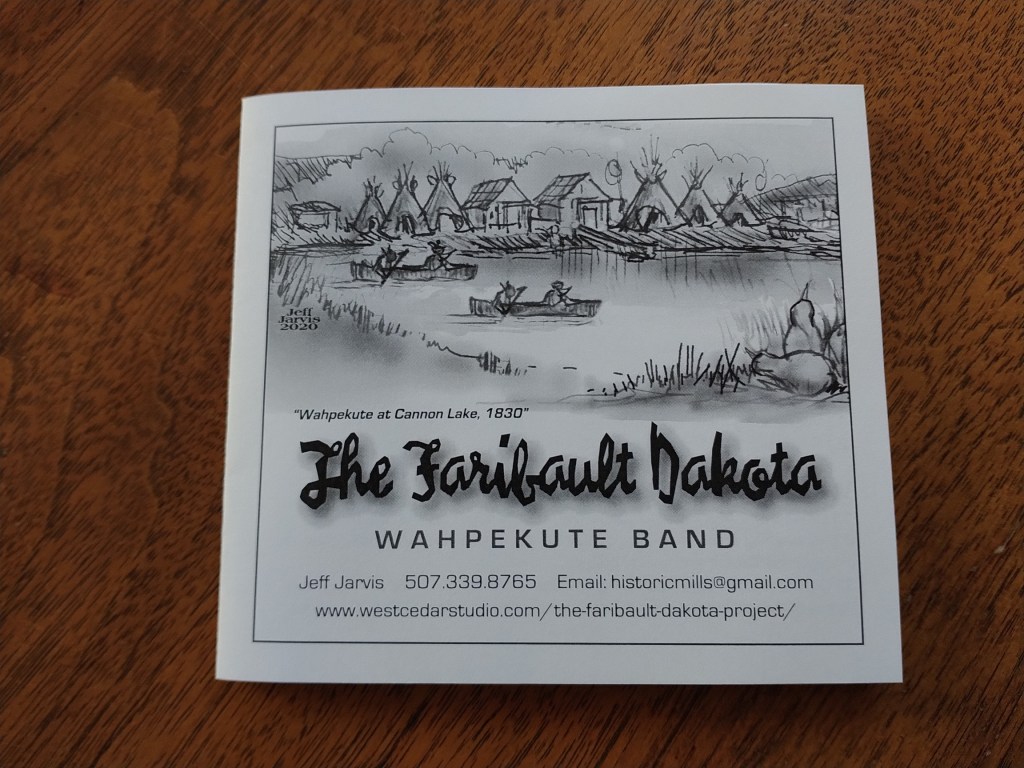
Jarvis spoke to a standing room only crowd packed into the Rice County Area United Way used bookstore on Faribault’s Central Avenue. The third speaker in the popular literary event series hosted by the bookshop since its fall opening, his talk was more history than literary. Interest ran high.
My interest in the Dakota traces back to the southwestern Minnesota prairie, where I grew up between the Upper and Lower Sioux Indian Reservations. Today the word “community,” references these homes of the Mdewakanton Dakota. When I moved to Rice County 42 years ago, I moved onto land once inhabited by the Wahpakute Dakota. But it wasn’t until I listened to Jarvis speak that I learned even more about the place I initially called home on the southeastern tip of Cannon Lake west of Faribault.
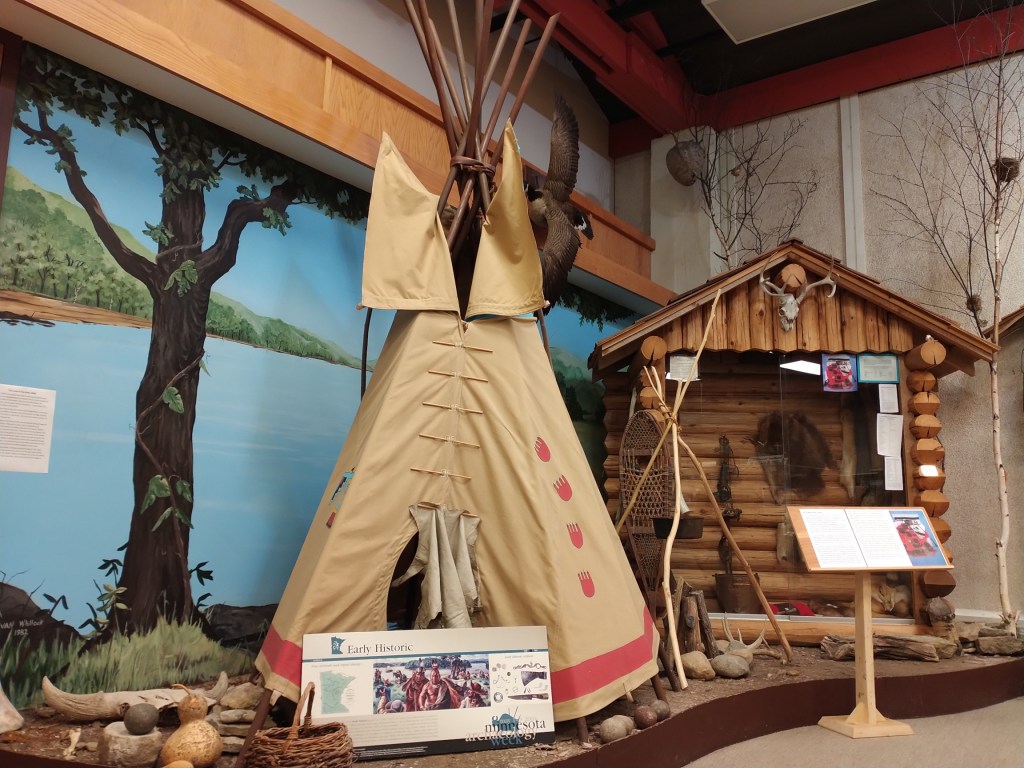
Long before fur traders and settlers moved to this region of southern Minnesota, the Dakota called this land home, typically living along the area’s lakes and rivers, including the Cannon. I knew this; I’ve attended many presentations on the Dakota by local historians. But I wasn’t aware that the former Ackman Store, the rental home where Randy and I lived for 2 ½ years after our 1982 marriage, was near the site of a trading post opened by fur trader and town founder Alexander Faribault.

Jarvis asked me after his presentation whether I saw ghosts while living there. I didn’t. And in a conversation with Lou Ackman, who grew up and lived along Cannon Lake and loaned Indian artifacts for Jarvis to show Thursday evening, I learned that people often searched the Ackmans’ farm fields for artifacts.
When Randy and I moved into Faribault, our geographic connection to Indigenous Peoples continued. We purchased a house below Wapacuta (sic) Park, where we still live today. It was upon this now park land that the Dakota placed their dead, (wrapped in buffalo robes or blankets) upon scaffolding until later burial. Jarvis also shared that the Dakota sometimes suspended wrapped bodies from trees to catch the spirits in the windy hilltop location prior to burial 1-2 years later. I’d never heard this prior to Thursday.
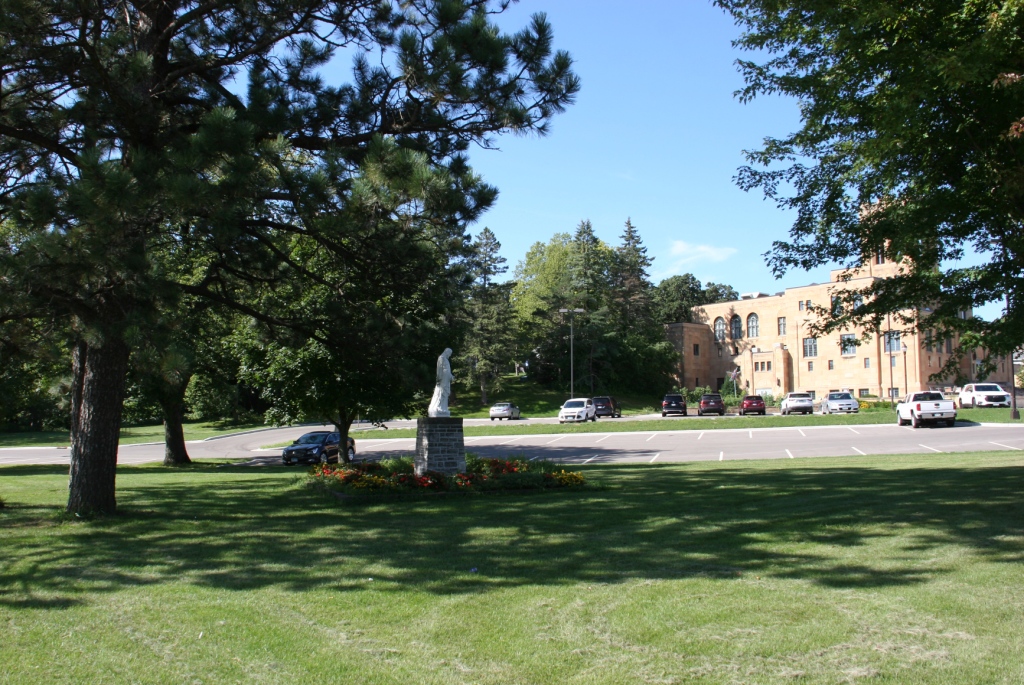
But I was aware that Peace Park, a triangle of land near Buckham Memorial Library, is an Indian burial grounds. Jarvis termed it an unfenced and unrecognized cemetery marked by a faith-based WW II monument and nothing indicating this is sacred ground of the Dakota. Several bodies were discovered buried there in 1874, he said, not wanting to delve deeper into that troubling topic at Thursday’s event.
Jarvis covered a lot more in his one-hour presentation. Most I knew. Some I didn’t. I always appreciate learning local history, especially about the 300-400 Dakota who relocated from Cannon Lake to live in elm bark huts and teepees in the area along the Straight River from Division Street to the wastewater treatment plant.
The community of Faribault, Jarvis said, had/has a lot of color and was/is “a beckoning place” to many peoples. He referenced the Indigenous Peoples of yesteryear and the immigrants of today. “We’re all connected. We’re all one,” Jarvis said. He’s right.
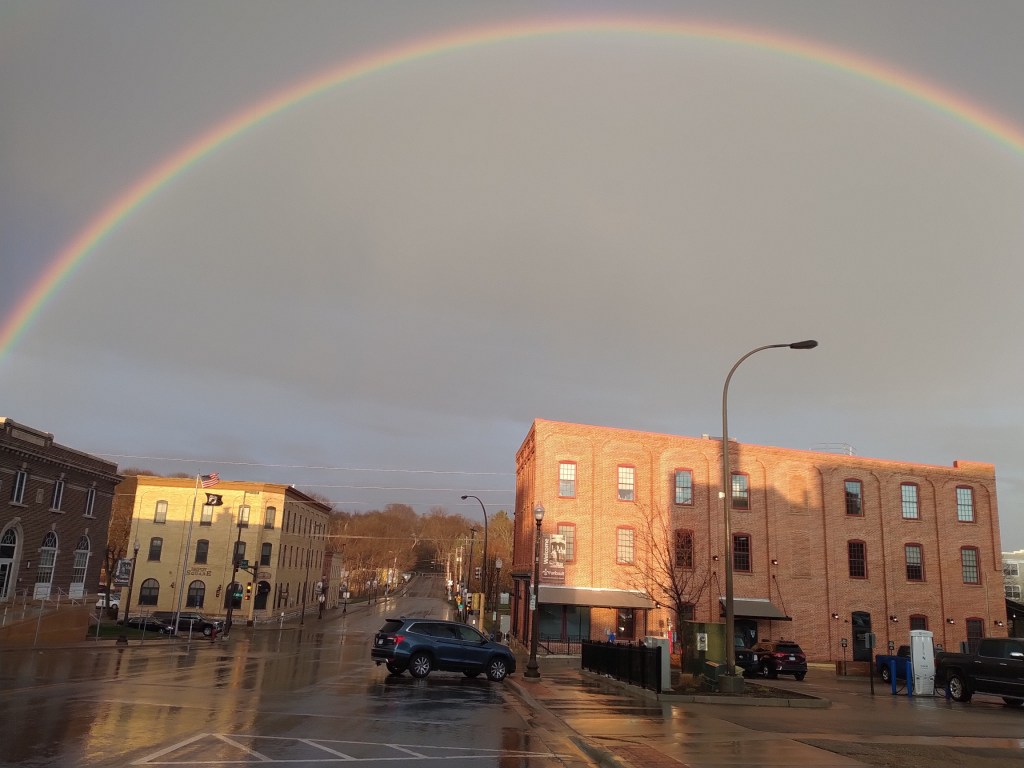
As I stepped outside the bookshop after Jarvis’ talk, cloudy skies opened to reveal stunning double rainbows—a symbol of promise and of hope. A symbol that we all live under the same sky, that we’re all connected.
FYI: To learn more about Jeff Jarvis’ work on the local Faribault Dakota Project, click here.
© Copyright 2024 Audrey Kletscher Helbling

Fascinating information. Your community seems to have a lot of worthwhile public programs. How fortunate you are. Thanks for sharing.
You’re right. Whether at Books on Central, the historical society, the library or senior center, there’s usually an interesting program on something. I don’t attend all of them, only those that really interest me. Jeff’s talk covered much more than I wrote about here. But I had to summarize lest the post got too long.
the more you learn, the more interesting this gets, and the certainty that we are all connected grows. that double rainbow as a symbol, cements it.
Agreed. I love learning. And learning about our connections.
I would have loved to attend something like this event! Your comment section is also a little disappointing. I recently attended a Highland Games event here and learned a LOT. I did that even though the yard need mowing, the house needs cleaning. Your last picture reminds me of Navasota, Texas. Dang if it isn’t loaded with stuff from Minneapolis, Minnesota. I remember one building still in use with the construction date of 1861! History is at our feet, stares us in the face and is only the next page in many books and in some cases lectures. I will be up by the light of the moon on the first of June wearing a kilt to attend a Norwegian event. If you ask, it is rather a long story, but the two (Kilt & Norwegian) are related – by about 700 years.
Gunny, the housecleaning and lawn mowing can wait. I’m so glad you recognize that and are getting out there and enjoying events in your community and beyond.
Interesting information in your blog.
I have yet to visit Books on Central…I tried a couple of times, but never made it when they were open. I have donated books to them however.
How fun to see a double rainbow!
Is there a place to donate books for the United Way bookstore in Northfield?
No place in Northfield. When Books on Central first opened, a friend was collecting donated books for them.
We also just donated seven bags of books to the Northfield Hospital’s Auxiliary book sale which makes a lot of money for their organization. It’s a good cause too. Sale begins last week in April. We will be in CA so we won’t be bringing another 7 bags home, which is usually the case! HA
Ah, OK, I thought perhaps the United Way collected books in Northfield, which would be a good idea. I hope to get to the Auxiliary book sale. It’s been a few years. I’m sorry you will miss it. But much more fun to be in CA and meeting your new granddaughter. 🙂
It’s wonderful that more communities are offering these types of programs so the public can be better informed on a variety of topics. How fantastic the rainbow appeared to support and symbolize the truth of the statement ‘we are all connected’. Thanks for sharing this Audrey!
I am deeply-appreciative of all the informative events in my community.
What an interesting event to learn more about where you live and who has come before.
Absolutely!